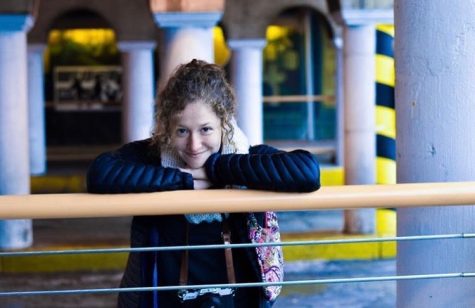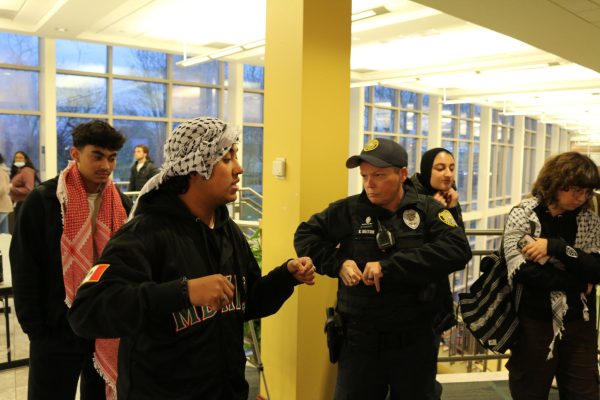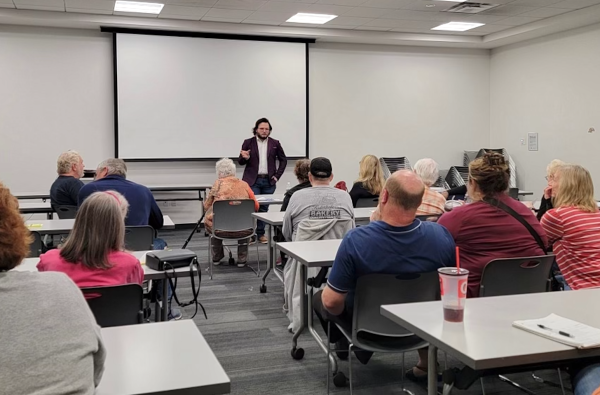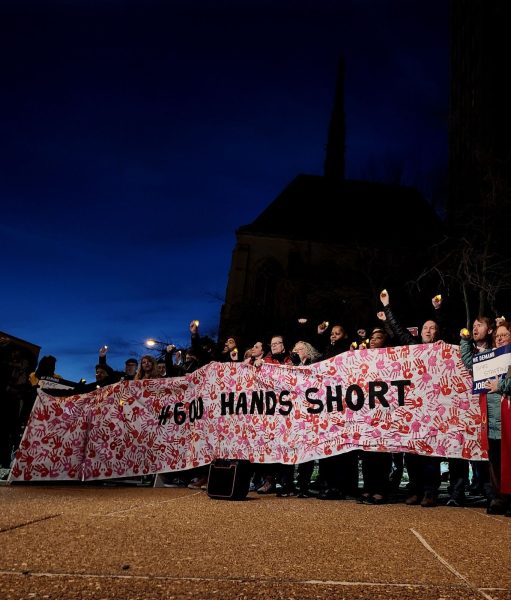Hari Kondabolu: Boundary-Pushing Comedy
“When you’re hungry, you’ll eat anything,” American stand-up comic, actor and filmmaker Hari Kondabolu said while chuckling to Saint Louis University students Wednesday night. No, he was not specifically talking about filling an empty stomach, but, instead, used this metaphor as a springboard for his conversation about his documentary “The Problem with Apu.”
While “The Simpsons” tries to engage a more diverse audience by including character Apu Nahasapeemapetilon, an Indian immigrant, Apu perpetuates stereotypical Indian tropes—and he is narrated by Hank Azaria, who is not of Indian descent. Kondabolu grew up watching “The Simpsons,” quoting lines frequently, and enjoyed the character Apu when he was first released. However, people who related to Apu in any context settled because he was all that was there. There was a lack of diversification within the show.
In Kondabolu’s talk at the Wool Ballrooms, he addressed that there has been progress in diversifying characters and acknowledging writers and filmmakers from varying backgrounds in the media world, but this is only because the U.S. was so far behind before.
“There is such a broad range of experiences that don’t get talked about,” Kondabolu said. “Human beings have infinite experiences because no one person has a single set of religious beliefs, interests, life experiences, and other variables. How are we repeating stories and stereotypes when every single human being has a unique story?”
Kondabolu considers this when preparing for his stand-up routines. Unlike other comedians who further isolate minority groups, Kondabolu utilizes his degrees in race, globalization and human rights to form the basis of his jokes. He covers topics on identity, inequality and the LGBTQ+ community, to name a few.
His comedic acts did not initially start out this way, though. Stand-up was a high school hobby for Kondabolu after gaining interest from seeing Margaret Cho perform on Comedy Central. “I thought, ‘Oh my God, is this even possible,’ because up to that point, everything was black and white with who you saw on TV doing stand-up,” he said. “To see an Asian person doing stand-up was not common. It seemed sort of out of the realm of possibility.”
Kondabolu’s first comedy show at his high school included a large amount of derivative material, which he coined as “Chris Rock and Margaret Cho jokes with the word ‘Indian’ in them.” His voice evolved in his shows as he practiced more, and after 9/11 occurred.
A sophomore in college at that point, Kondabolu experienced prejudice as a non-white person from Queens, New York post 9/11. He explained that the country was traumatized, but that some, including himself, were traumatized twice due to distrust. The experience forced him to think about the world more critically because up to that point, he did not think outside of himself.
“This [terrorist attack] happens, and I’m thinking ‘How could this occur? Why are people behaving this way, and why are we going to war?’ Meanwhile, I’m on stage telling ridiculous jokes about my parents and doing accents while studying about this intense stuff going on. At some point, I felt like a phony for talking about stuff I didn’t care about.”
He began to shift the subject of his comedy toward what he was learning and experiencing. However, the shift was not seamless. Kondabolu said that it took a while to balance his message with comedic relief, so that he did not come across as ranting and self-righteous. “I don’t talk about this stuff to make a point,” he said. “If you go in with an agenda, you’re not going to make good art. I talk about this stuff because I care about it. I think about if I am writing something that is true to myself and funny.”
At the end of the day, Kondabolu acknowledged that he will say things that make people uncomfortable—that comes with the territory of the profession. However, he enjoys when people get so uncomfortable that they laugh and discuss it after. Comedians are meant to push the boundaries.
Your donation will support the student journalists of Saint Louis University. Your contribution will help us cover our annual website hosting costs.

Staunch entered SLU as a Biomedical Engineering major on a Pre-med track, with the intention of continuing her studies in medical school. After a year and a half at SLU, she realized she missed the balance of the arts with sciences as she was previously an editor in her high school yearbook committee.
"Working for UNews, whether it was as Associate News Editor, Managing Editor, or Editor-in-Chief, has taught me the value of working on tight deadlines and how to adequately adapt to certain unexpected situations. The field of Journalism is incredibly fast paced - but that is why I love it so much," Staunch said. "There is always something new occurring, and you would not be able to effectively complete your job unless you had the support of your other editors and staff."
Though paradoxical in nature, she switched her major to Communication. She wants to incorporate both her analytical and creative sides to report on medical topics. Her dream job: to write for Discover Magazine.
When Staunch is not in the newsroom, she is captaining the women’s Ultimate Frisbee team at SLU. She began playing her freshman year and enjoys it as an outlet.









